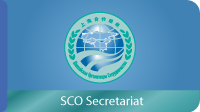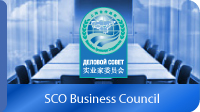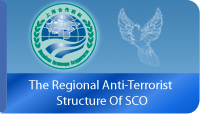|
|
 |
| On the hills of Manchuria |
| 21.10.2011 12:31 |
Yuri Tavrovsky, political observer |
|
|
|
Why a copy of moscow State university?
In 1992, the Chinese government decided to grant a status of open cities to fourteen border cities and create a zone of border economic cooperation on their basis. Thus, a number of four- and sixstoreyed buildings emerged in Manzhouli; they proudly dominated single-storey log-crib buildings and simple brick-built houses. At that time, people in China and far beyond already knew the names of Shenzhen and Zhuhai – new cities located in seaside provinces. They were built at the boundaries with Hong Kong and Macau, then ex-colonies of England and Portugal, as «special economic zones”. If you look at Shenzhen from an observation platform on a 60-storeyed skyscraper, you will understand that it is very similar to Singapore, Tokyo and New York: a million-plus city built up with skyscrapers. Manzhouli is quite different.
Accelerated construction of 20-30-storeyed high risers with their indispensable round or conical towers is accompanied by erection of unique buildings in this city. It can be called as a Chinese fantasy about Russian and Soviet architecture. The building of a local institute is a reduced copy of the main building of the Moscow State University; the Museum of Russian Pictorial Art is a collective image of a five-domed Orthodox Church. The International Trade Center looks like a VDNKh pavillion and is enclosed by the “Kremlin wall”. Plus the Soviet sculpture park with reduced copies of monuments to Gagarin in Moscow, Peter the Great in St. Petersburg, monuments – Motherland in Volgograd, Soviet War Memorial in Berlin Treptower Park, Moukhin’s Worker and Kolkhoz Woman and dozens of other classical works. Also, the Matryoshki Park with its 20-meter triple doll overtopping at the center is located nearby: a Chinese beauty looks inside China and a Russian one peers at Russia, while a Mongolian girl admires for the Mongolian prairie reaches. Dozens of smaller matryoshkas are set around; each has its own writer symbolizing a certain country. America’s Mark Twain, for example, neighbors Nikolay Ostrovsky still highly appreciated in China.
By erecting new buildings a la Russe, local authorities remember the history. Surviving Russian log houses have been renewed and granted the status of protected cultural heritage. A monument and well-attended mass graves of Soviet soldiers are in the center of a small city park. It is the place where in August 1945 the Soviet Army started attacking the Chinese Northern lands occupied by the Japanese Army. Grateful memory is alive until now - a sculptural group of Soviet soldiers – liberators recently appeared next to the Memorial due to the sponsorship of private companies. Also, the main border crossing point joins the Monument to the Red Secret Route, which was used by missionaries of communist leaders, Comintern messengers, cadets, students of the Communist University of the Toilers of the East and other educational institutions, under the guise of boiler firemen, track laborers or petty dealers, to get across the territory controlled by the Kuomintang members and Japanese to the Soviet Union in 20- 30ies. Thus, anyone visiting Manzhouli will ask a question sooner or later: why the Northern neighbor is loved so much?
City with russian accent
The answer is simple. At present, the crossing points in Zabaikalsk and Manzhouli transship and transfer 70 % of the entire volume of the Russian-Chinese trade - timber, loose goods, crude oil, and containers with various products. In 2010, their aggregate weight was 26.11 mln tons. The city with its fast-growing population (it is already 300 ths people) has one of the lowest unemployment in the country, i.e. below 4%. Construction of new industrial and logistics areas is underway. Speaking the language of economy, the city lives at the expense of the Chinese-Russian trade. It is clear that without Beijing’s permission Manzhouli can hardly offer residents of neighboring Russian regions
a right to visa-free border crossing and duty-free trade with possibilities to buy
and sell using Russian Rubles just like Yuans. Last year, 1.7 mln Russians and
Chinese citizens exercised this right. Due to its role of an interface station for Chinese Northern and North-Eastern provinces with Russian Trans-Baikal regions and the Far East, Manzhouli has also been receiving additional financing under a government program for the development of backward provinces starting from 1992. The city has a part of customs duties it its disposal. Since 2003, the city has also been receiving funds from the Program for the Development of Old Industrial Base of the North-East. The city has gained a lot of advantages from the of Russian-Chinese Program of cooperation between regions of the Russian Far East and Eastern Siberia with provinces of the Chinese NorthEast till 2018, which was accepted in 2009. Last year, Manzhouli was granted by the Chinese government a special status of the experimental zone for priority development and openness that also assumes generous financing and additional benefits. Thus, Manzhouli is rapidly turning into a “Chinese city with Russian specifity».
Manzhouli has a lot of Russians. Despite the linguistic barrier, they trade, argue, have their photos taken in shops, stores and supermarkets. Russians eat Chinese, Russian and Mongolian food; they applaud to Chinese jongleurs and Russian striptease performers and sing karaoke folk songs in numerous restaurants and night clubs. «The same Chinese goods are 2-3 times cheaper here than in Chita,” a plump blonde says, who has come here to buy clothes for her son for a new school year. “We can even spend our saved money for other things like living in a comfortable hotel, visiting bars and night clubs. Manchuria is a comfortable and safe place, so I want to settle down here when I retire.» A Chinese man, owner of a photo equipment shop, is also happy. «Russians like to take photos and buy the most advanced equipment,” he explains. “A lot of people, especially men, look fearful at first; they are very big and speak loudly. However, when you accustom yourself and learn how to communicate with them, they reveal their good qualities: honesty, generosity and good nature. I wish I would open a shop in Zabaikalsk. Even better in Chita or Irkutsk”.
Not only the West
There is one more serious reason for flourishing of this miracle city - geopolitical. It means that the Chinese leadership tries to diverse foreign economic relations.
By declaring a course for reforms and openness in 1978, Deng Xiaoping created conditions on the Chinese East Coast for the rise of miracle cities striving for cooperation with the West. Massive governmental financing and special hothouse conditions has enabled Shenzhen, Zhuhai, Shantou to become interface nodes linking economies of Hong Kong, Macau, Taiwan and the SouthEast Asia initially, and developed Western countries afterwards. These display cases of new China have assisted in the sharp improvement of the country’s perception in the global public opinion.
The Northern route for the policy of openness was closed in those days. In 1989, the relations between Moscow and Beijing became normalized, but soon the Soviet Union broke up and Russia faced troublous times. The time for implementing the Northern Strategy for Beijing came only at the turn of the 20th and 21st centuries. Currently, two monumental achievements of this strategy are creation of the Shanghai Cooperation Organization and conclusion of the 2001Agreement on Neighborliness, Friendship and Cooperation between Russia and China.
Today, strategic partnership relations are quite essential for Beijing and they will become even more important and vital in the foreseeable future. Discontent with peaceful growth of China shown by the US, Japan, countries in Europe, Southern and South-East Asia is increasing year by year and starts taking contours of military and political control of the PRC along the border perimeter. Under these circumstances, peace and interaction on the Northern boundary with Russia and Mongolia acquire a special meaning. It will enable not to divert huge resources to upgrading of the military infrastructure of boundaries and border areas.
Establishing of trade and cooperation with neighboring countries will expand the resource base of the Chinese economy and provide guaranteed transit of strategic raw materials from remote regions. Ideally, Beijing needs a belt of peace and interaction at the interstate and interregional levels, zone of free day-to-day contacts of residents in border regions all along the boundaries with Russia and Mongolia.
In 2010, the trading volume of the Russian and Chinese border areas reached USD 7.43 bln out of USD 55.4 bln of the entire Russian-Chinese trade. It is interesting that the city of Manzhouli itself has traded for an amount of USD 2.06 bln. Manzhouli, Heihe, Suifenhe and other miracle cities appeared after 1992 are intended to become basic economic outposts on the Northern boundary.
To the one side
«First Gate to the northern country”. This calligraphic inscription decorates a traditional Chinese arch painted with cinnabar and covered with gold tiles on the roof. The arch is provided with a plate: «After the Russian party opens their part of the trade exchange zone, merchants and tourists of both countries will be able to visit each other through this gate. It will become embodiment of friendship between Chinese and Russian people.” However, there is one more plate in front of the central passage of the arch – with the faded inscription «No passage». The zone of visa-free and duty-free trade reconciled by bilateral agreements is only half ready on both boundary sides. The Chinese half. Apart from the arch, buildings of supermarkets, shopping malls, a hotel with restaurant have been built and operate today. Also, there are two-meter matryoshkas and a gilt fountain looking like the Friendship of Nations in Moscow VDNKh.
The Russian territory starts behind barbed wire entanglements, nearly forty meters away from the First Gate. A single three-storeyed building and some concrete uncompleted houses can only be seen in the bold prairie; low-rise buildings of the settlement of Zabaikalsk are somewhere on the horizon. The contrast is striking.
Simple questions spontaneously arise here. Why not open even simple even simple shopping streets on our side, ведь Chinese shops are lively selling not only Chinese goods but also Russian souvenirs to tourists? Why not treat with dishes of the Russian cuisine and refreshing drinks so desired in this rough prairie in summer and heating drinks in winter? Why not offer oil paintings, products made of Trans-Baikal semiprecious stones and other Russian goods so popular in China? Why not arrange even a small amusement park in the Russian style?
It appears that the problem is not just sluggishness of local public officers and businessmen. Without massive institutional and financial support of the central authorities, Zabaikalsk will never catch up with Manzhouli. This settlement has gained little from numerous target development programs for Trans-Baikal and the Far East implemented both in the USSR and new Russia. However, due to the program of near-border cooperation in Zabaikalsk signed in 2009, construction of a new timber processing facility has been started recently; its twin in the settlement of Dauriya and an industrial zone in the settlement of Mogoitui are being built using Chinese loan capital. Though, it has little to do with Zabaikalsk. The show case facing Russia and containing the inscription «Chinese economic miracle», which Manzhouli rapidly becomes, still reflects a tragic destiny of Russian backs.
Meanwhile, in the conditions of ongoing world crisis and forthcoming bankruptcy of Europe, economic relations with China may become some kind of insurance for Russia. But still the First Gate to the Northern country is the gate to nowhere.
Neighbors
China is a major foreign trade partner for Russia. The trading volume between the two countries reached almost $60 bln last year. Russian and Chinese leaders intend to increase this figure to $100 bln by 2015 and to $200 bln by 2020. This was reported by RF President Dmitry Medvedev during the press conference summarizing the results of negotiations with Chairman of the PRC Hu Jintao in June this year. Certainly, neither Russia nor China can stand out only due to the bilateral trade in case of global economic crisis because a considerable part of their export still goes to developed countries. However, Russia is quite an important partner for the PRC since it is both a good market outlet and big supplier of raw materials. It should be specially mentioned that this bilateral trade and economic relations are vital for border regions of the two countries. The Program of cooperation between regions of the Russian Far East and Eastern Siberia and the Chinese North-East has been implemented for two years already
|
|
* Реестр иностранных средств массовой информации, выполняющих функции иностранного агента:
Голос Америки, Idel.Реалии, Кавказ.Реалии, Крым.Реалии, Телеканал Настоящее Время, Azatliq Radiosi, PCE/PC, Сибирь.Реалии, Фактограф, Север.Реалии, Радио Свобода, MEDIUM-ORIENT, Пономарев Лев Александрович, Савицкая Людмила Алексеевна, Маркелов Сергей Евгеньевич, Камалягин Денис Николаевич, Апахончич Дарья Александровна, Medusa Project, Первое антикоррупционное СМИ, VTimes.io, Баданин Роман Сергеевич, Гликин Максим Александрович, Маняхин Петр Борисович, Ярош Юлия Петровна, Чуракова Ольга Владимировна, Железнова Мария Михайловна, Лукьянова Юлия Сергеевна, Маетная Елизавета Витальевна, The Insider SIA, Рубин Михаил Аркадьевич, Гройсман Софья Романовна, Рождественский Илья Дмитриевич, Апухтина Юлия Владимировна, Постернак Алексей Евгеньевич, Общество с ограниченной ответственностью Телеканал Дождь, Петров Степан Юрьевич, Istories fonds, Шмагун Олеся Валентиновна, Мароховская Алеся Алексеевна, Долинина Ирина Николаевна, Шлейнов Роман Юрьевич, Анин Роман Александрович, Великовский Дмитрий Александрович, Альтаир 2021, Ромашки монолит, Главный редактор 2021, Вега 2021
* Сведения реестра НКО, выполняющих функции иностранного агента:
Фонд защиты прав граждан Штаб, Институт права и публичной политики, Лаборатория социальных наук, Фонд по борьбе с коррупцией, Альянс врачей, НАСИЛИЮ.НЕТ, Мы против СПИДа, Фонд защиты прав граждан, СВЕЧА, Гуманитарное действие, Открытый Петербург, Феникс ПЛЮС, Лига Избирателей, Правовая инициатива, Гражданская инициатива против экологической преступности, Фонд борьбы с коррупцией, Гражданский Союз, Российский Красный Крест, Центр Хасдей Ерушалаим, Центр поддержки и содействия развитию средств массовой информации, Горячая Линия, В защиту прав заключенных, Институт глобализации и социальных движений, Центр социально-информационных инициатив Действие, ВМЕСТЕ, Благотворительный фонд охраны здоровья и защиты прав граждан, Благотворительный фонд помощи осужденным и их семьям, Фонд Тольятти, Новое время, Серебряная тайга, Так-Так-Так, центр Сова, центр Анна, Проект Апрель, Самарская губерния, Эра здоровья, правозащитное общество Мемориал, Аналитический Центр Юрия Левады, Издательство Парк Гагарина, Фонд имени Андрея Рылькова, Сфера, Центр защиты СИБАЛЬТ, Уральская правозащитная группа, Женщины Евразии, Рязанский Мемориал, Екатеринбургское общество МЕМОРИАЛ, Институт прав человека, Фонд защиты гласности, Российский исследовательский центр по правам человека, Дальневосточный центр развития гражданских инициатив и социального партнерства, Пермский региональный правозащитный центр, Гражданское действие, Центр независимых социологических исследований, Сутяжник, АКАДЕМИЯ ПО ПРАВАМ ЧЕЛОВЕКА, Частное учреждение Совета Министров северных стран, Центр развития некоммерческих организаций, Гражданское содействие, Центр Трансперенси Интернешнл-Р, Центр Защиты Прав Средств Массовой Информации, Институт развития прессы - Сибирь, Фонд поддержки свободы прессы, Гражданский контроль, Человек и Закон, Общественная комиссия по сохранению наследия академика Сахарова, Информационное агентство МЕМО. РУ, Институт региональной прессы, Институт Развития Свободы Информации, Экозащита!-Женсовет, Общественный вердикт, Евразийская антимонопольная ассоциация, Чанышева Лилия Айратовна, Сидорович Ольга Борисовна, Таранова Юлия Николаевна, Туровский Александр Алексеевич, Васильева Анастасия Евгеньевна, Ривина Анна Валерьевна, Бурдина Юлия Владимировна, Бойко Анатолий Николаевич, Гусева Ольга Андреевна, Дугин Сергей Георгиевич, Пивоваров Андрей Сергеевич, Писемский Евгений Александрович, Аверин Виталий Евгеньевич, Барахоев Магомед Бекханович, Шевченко Дмитрий Александрович, Жданов Иван Юрьевич, Рубанов Роман Викторович, Шарипков Олег Викторович, Мальсагов Муса Асланович, Мошель Ирина Ароновна, Шведов Григорий Сергеевич, Пономарев Лев Александрович, Каргалицкий Борис Юльевич, Созаев Валерий Валерьевич, Исакова Ирина Александровна, Исламов Тимур Рифгатович, Романова Ольга Евгеньевна, Щаров Сергей Алексадрович, Цирульников Борис Альбертович, Халидова Марина Владимировна, Людевиг Марина Зариевна, Федотова Галина Анатольевна, Паутов Юрий Анатольевич, Верховский Александр Маркович, Пислакова-Паркер Марина Петровна, Кочеткова Татьяна Владимировна, Чуркина Наталья Валерьевна, Акимова Татьяна Николаевна, Золотарева Екатерина Александровна, Рачинский Ян Збигневич, Жемкова Елена Борисовна, Гудков Лев Дмитриевич, Илларионова Юлия Юрьевна, Саранг Анна Васильевна, Захарова Светлана Сергеевна, Аверин Владимир Анатольевич, Щур Татьяна Михайловна, Щур Николай Алексеевич, Блинушов Андрей Юрьевич, Мосин Алексей Геннадьевич, Гефтер Валентин Михайлович, Симонов Алексей Кириллович, Флиге Ирина Анатольевна, Мельникова Валентина Дмитриевна, Вититинова Елена Владимировна, Баженова Светлана Куприяновна, Исаев Сергей Владимирович, Максимов Сергей Владимирович, Беляев Сергей Иванович, Голубева Елена Николаевна, Ганнушкина Светлана Алексеевна, Закс Елена Владимировна, Буртина Елена Юрьевна, Гендель Людмила Залмановна, Кокорина Екатерина Алексеевна, Шуманов Илья Вячеславович, Арапова Галина Юрьевна, Пастухова Анна Яковлевна, Прохоров Вадим Юрьевич, Шахова Елена Владимировна, Подузов Сергей Васильевич, Протасова Ирина Вячеславовна, Литинский Леонид Борисович, Лукашевский Сергей Маркович, Бахмин Вячеслав Иванович, Шабад Анатолий Ефимович, Сухих Дарья Николаевна, Орлов Олег Петрович, Добровольская Анна Дмитриевна, Королева Александра Евгеньевна, Смирнов Владимир Александрович, Вицин Сергей Ефимович, Золотухин Борис Андреевич, Левинсон Лев Семенович, Локшина Татьяна Иосифовна, Орлов Олег Петрович, Полякова Мара Федоровна, Резник Генри Маркович, Захаров Герман Константинович
* Единый федеральный список организаций, в том числе иностранных и международных организаций, признанных в соответствии с законодательством Российской Федерации террористическими:
Высший военный Маджлисуль Шура, Конгресс народов Ичкерии и Дагестана, Аль-Каида, Асбат аль-Ансар, Священная война, Исламская группа, Братья-мусульмане, Партия исламского освобождения, Лашкар-И-Тайба, Исламская группа, Движение Талибан, Исламская партия Туркестана, Общество социальных реформ, Общество возрождения исламского наследия, Дом двух святых, Джунд аш-Шам, Исламский джихад, Аль-Каида, Имарат Кавказ, АБТО, Правый сектор, Исламское государство, Джабха аль-Нусра ли-Ахль аш-Шам, Народное ополчение имени К. Минина и Д. Пожарского, Аджр от Аллаха Субхану уа Тагьаля SHAM, АУМ Синрике, Муджахеды джамаата Ат-Тавхида Валь-Джихад, Чистопольский Джамаат, Рохнамо ба суи давлати исломи, Террористическое сообщество Сеть, Катиба Таухид валь-Джихад, Хайят Тахрир аш-Шам, Ахлю Сунна Валь Джамаа
* Перечень общественных объединений и религиозных организаций в отношении которых судом принято вступившее в законную силу решение о ликвидации или запрете деятельности:
Национал-большевистская партия, ВЕК РА, Рада земли Кубанской Духовно Родовой Державы Русь, Асгардская Славянская Община Асгардской Веси Беловодья, Славянская Община Капища Веды Перуна, Мужская Духовная Семинария Староверов-Инглингов, Нурджулар, К Богодержавию, Таблиги Джамаат, Русское национальное единство, Национал-социалистическое общество, Джамаат мувахидов, Объединенный Вилайат Кабарды, Балкарии и Карачая, Союз славян, Ат-Такфир Валь-Хиджра, Пит Буль, Национал-социалистическая рабочая партия России, Славянский союз, Формат-18, Благородный Орден Дьявола, Армия воли народа, Национальная Социалистическая Инициатива города Череповца, Духовно-Родовая Держава Русь, Русское национальное единство, Древнерусской Инглистической церкви Православных Староверов-Инглингов, Русский общенациональный союз, Движение против нелегальной иммиграции, Кровь и Честь, О свободе совести и о религиозных объединениях, Омская организация Русское национальное единство, Северное Братство, Клуб Болельщиков Футбольного Клуба Динамо, Файзрахманисты, Мусульманская религиозная организация п. Боровский, Община Коренного Русского народа Щелковского района, Правый сектор, Украинская национальная ассамблея, Украинская повстанческая армия, Тризуб им. Степана Бандеры, Украинская организация «Братство», Свидетели Иеговы, О противодействии экстремистской деятельности, РЕВТАТПОД, Артподготовка, Штольц, В честь иконы Божией Матери Державная, Сектор 16, Независимость, Организация футбольных болельщиков «Фирма», Молодежная правозащитная группа МПГ, Курсом Правды и Единения, Каракольская инициативная группа, Автоград Крю, Союз Славянских Сил Руси, Алля-Аят, Благотворительный пансионат Ак Умут, Русская республика Русь, Арестантское уголовное единство, Башкорт, Нация и свобода, W.H.С., Фалунь Дафа, Иртыш Ultras, Русский Патриотический клуб-Новокузнецк/РПК, Сибирский державный союз, Фонд борьбы с коррупцией, Фонд защиты прав граждан, Штабы Навального
|






















Leave a comment